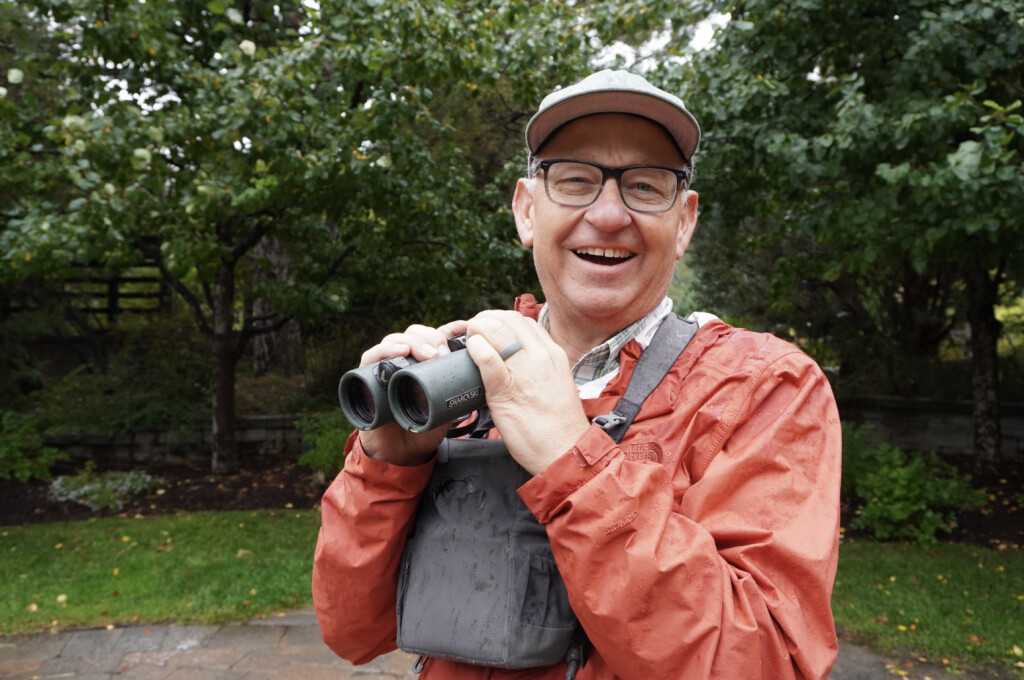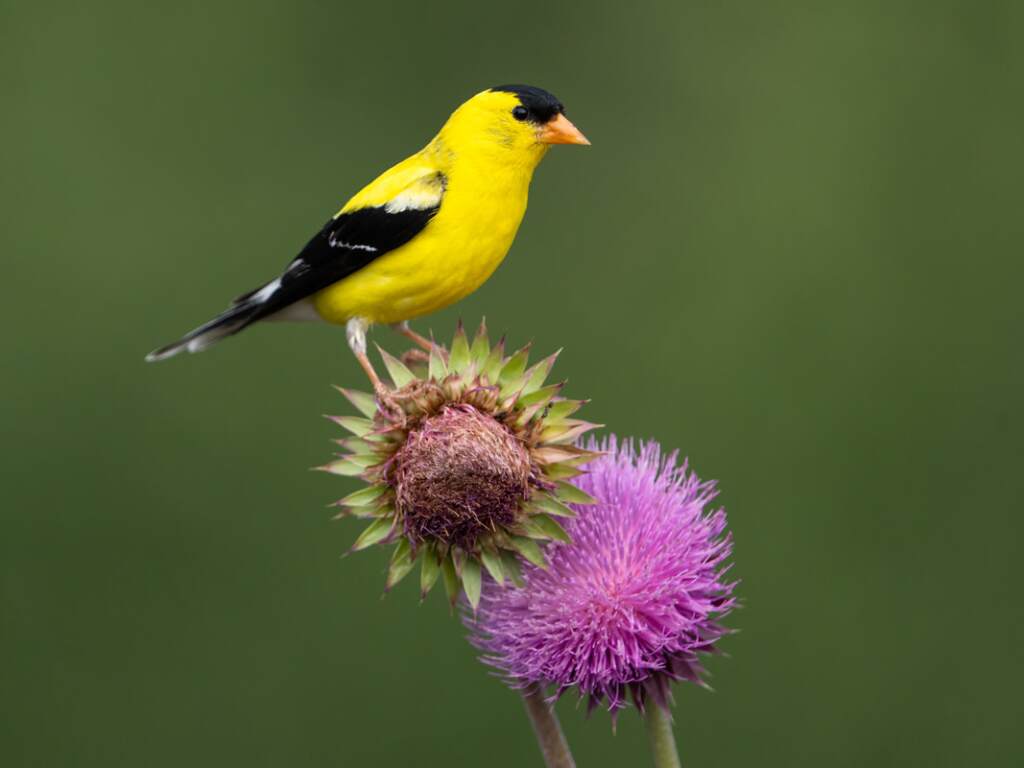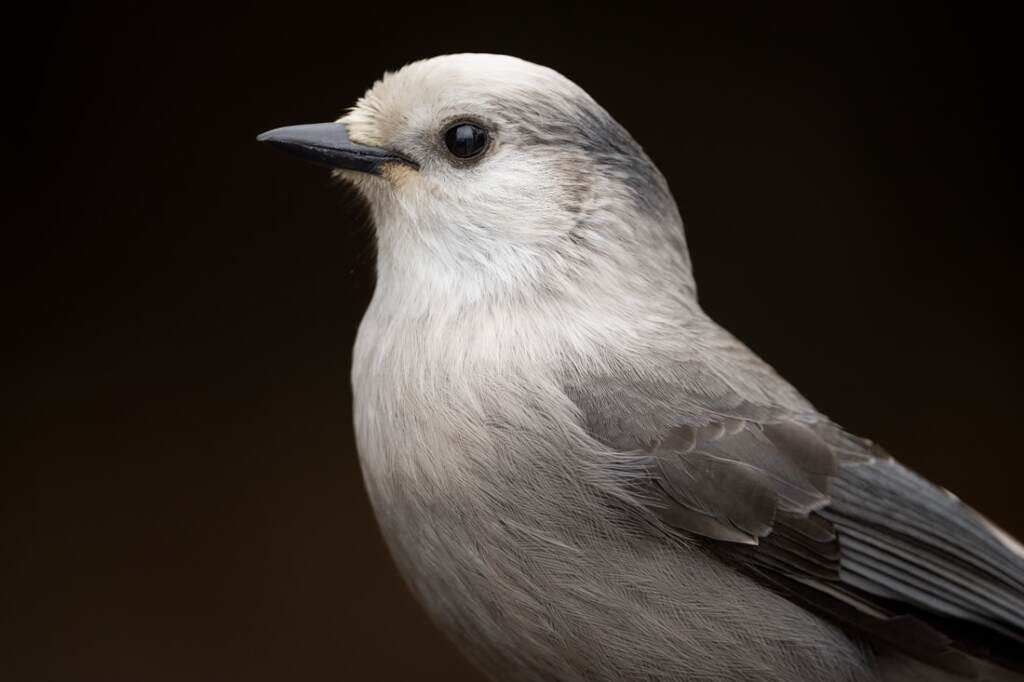
REXBURG— Darren Clark’s dedication to his 32-year hobby has put him in precarious situations — like driving hours to the Boise dump during a family celebration, or looking through binoculars on a beach, which he says could have been mistaken as an awkward attempt at people-watching. Other times this hobby has flown him to costal Texas, and even Florida with minimal gear, and his trusty binoculars as his companion.
Clark is an avid birdwatcher, and according to a popular website for birders called eBird, by the Cornell Lab of Ornithology, he’s seen the most species of birds in the state of Idaho— 395.
“A few years ago, my goal was to get to 400 before I died. That’s still my goal, but I hope it happens sooner than later,” Clark says.
According to the Idaho Bird Records Committee the list of bird species identified throughout the state has exceeded 430. Clark, 53, says there are often new birds species that are yet to be discovered in Idaho, and the prospect of seeing one is what keeps him hooked.
“There are moments of adrenaline with birdwatching. If you seen an unusual species it can … get your heart racing,” Clark says. “You’re always aware of what’s coming and what’s going, there’s always something new to discover, so I just really enjoy that.”
Clark explains the mix of fowl that local birdwatchers see include international species that are migrants as well as birds that are native to the state. He says there was a new species discovered in Idaho called the Cassia Crossbill. It’s found south of Twin Falls.
“It’s very similar to the other Crossbills, but it was through scientific research (it was) discovered that it is a new species, or a separate species, so Idaho is the only place you can see a Cassia Crossbill,” Clark says.
Birdwatching Beginnings
Clark’s passion initially began with his draw to nature while growing up in Idaho Falls.
“When I was a kid I would catch snakes and frogs, and really enjoyed that,” Clark says.
His interest in birdwatching took off in his early 20’s during his first years at Rick’s College, now Brigham Young Universtiy – Idaho. He remembers studying field biology and having to document birds.
“I really started to realize there’s not that many snakes here in Idaho, there’s a lot of birds and you can birdwatch any where you go, so it just was a natural transition from catching frogs and snakes to birdwatching,” Clark says.
As a photography professor at BYU – Idaho, capturing landscape photography remained his primary subject for the craft.
“Those two lives— birdwatching and photography never intersected for a while,” Clark says. “I was always outside doing one thing or the other.”
In 2010 these two interests finally began to blend, and he documents his findings on his website.

Intriguing species
When people see Clark birdwatching, or when the topic comes up in conversation he’s often asked if he’s seen a Bald Eagle. Clark hates to admit that it’s not his favorite bird to see, and there are many in the area.
“Bald Eagles, they’re awesome but… it’s kind of my least favorite bird just because… it’s almost a cliche,” Clark says.
For Clark, he doesn’t have just one favorite bird— but says that sparrows and warblers are at the top. He enjoys the challenge of identifying difficult birds
“People think there’s only one species of sparrow, we probably have 20 species of sparrows in Idaho… I like warblers these colorful migrants that spend the winters in South America, or Central America, and spend their summers up here,” Clark says.
Clark has been the first person recorded to see specific species of birds in Idaho like the Scarlet Tanager, an American songbird with a bold, red body and black wings. Other times he’s experienced rare sightings with a friend.
“I’ve found the first (with a friend) White-eyed Vireo in Idaho,” Clark says.
Clark enjoys growing his three birding lists as he discovers new birds — those list are titled Madison County, Idaho, and Life. He’s added five birds to his growing list this year including a Yellow-bellied Sapsucker, a Tricolored Blackbird, a Black-throated Green Warbler, a Cape May Warbler, and a Prairie Warbler.

Why Clark Keeps Birding
Clark loves going far, and staying close to keep up with his hobby.
“Birdwatching just takes you to places that I never would have visited before,” Clark says. “Sometimes it’s not the most beautiful places in the world, but sometimes it is just these remarkably beautiful places that I never would have gone to if there wasn’t a bird to chase, or a specific type of habitat that I was going to, not just here in Idaho, but really around the country.”
On a typical birding excursion he regularly travels west to Camas National Wildlife Refuge, or to the Market Lake, or the Mud Lake Wildlife Management areas.
“The reason I go there is they seem to have more unusual species found regularly than anywhere else, and so how I prepare for that is I get up, and put my clothes on and make sure I have my binoculars and my camera and I drive out there, there’s not a lot of prep,” Clark says.
Clark says he loves the birds that each new season brings.
“You’re always aware of what’s coming and what’s going, there’s always something new to discover, so I just really enjoy that,” Clark says. “I could probably see a Baird’s Sandpiper, and that Baird’s Sandpiper probably a day ago, a week ago, was up in the Arctic, and in a couple of days, in a week it’s going to be in South America, and just the idea that these birds are coming and going, it blows my mind.”
Getting started
Birdwatching is an interest that has captivated various ages, and can be carried into any stage of life. Clark recommends websites or apps like eBird, the Audubon Bird Guide app, and Merlin Bird IDapp to get started.
He says beginners don’t even have to leave town or their car to birdwatch, the main skills needed are patience, and a willingness to be alone with your thoughts. He also says a nice pair of binoculars can help.
“I don’t even need to have binoculars sometimes to birdwatch, I could hear Chickadees, I could hear a MacGillivray’s Warbler, I could hear a Wilson’s Warbler, a Song Sparrow– and you know they’re there, you don’t have to look at them. Birding is not just visual, but it’s also audible,” Clark says.
Clark says any chance to spend quality time in nature with God’s creation is a privilege.
“…You’re there, and a bird’s there, and you’re unaware of anything that’s going on, it’s remarkable, and a spiritual experience for me,” Clark says.